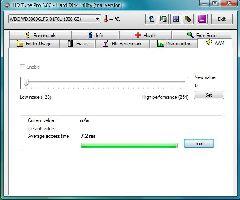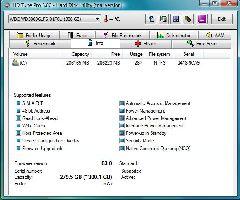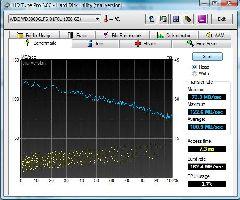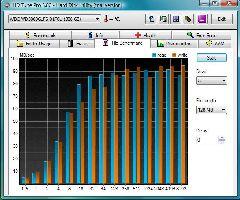|
Western Digital VelociRaptor HDD
Benchmarking:
Test Rig:
- Thermaltake Kandalf LCS case
- ASUS Striker II NSE motherboard
- Intel Core 2 Quad Q9650
- Kingston 2GB DDR3-1600 kit
- Western Digital VelociRaptor
- ATI Radeon HD 3870
- Tagan BZ900 900W PSU
- Windows Vista 32-bit
Testing:
Testing started off quite jagged for us. The first VelociRaptor we received was sent with a very nice care package from Western Digital, and we appreciated it a lot. It was a pre-release and had an "engineering sample" sticker on it. Immediately after installing Windows Vista 32-bit, the drive started clicking during an Adobe Photoshop install. The drive was dead. Western Digital graciously sent us a 2nd drive for testing.
After testing our Kingston DDR3-1375 kit, we decided to overclock the RAM. Eventually hitting a frequency of 1500MHz, the hard drive got a corrupted sector and died...again. Western Digital sent us a third drive (3rd times charm!), which we've benchmarked below.
HD Tune:
We used HD Tune to test many facets of the drive. By running the AAM test, we can tell the seek time of the drive. Below we see that it comes out to 7.2ms. By using the info tab, we see that the drive is 300GB, formatted as NTFS, and has many supported features.
HD Tune AAM test |
HD Tune Info |
We continue the testing with the hard drive benchmark and the file benchmark.
HD Tune HDD Benchmark |
HD Tune File Benchmark |
We see that the HDD benchmark is running a minimum read speed of 73.9MB/sec, with a maximum of 122.6MB/sec, and an average read speed of 100.9MB/sec. These speeds are very common for drives running in RAID, but not as a single drive. The file benchmark was run using 128MB file lengths. Over time, we see that the read speed evens out to around ~90MB/sec, and the write speeds even out to ~93MB/sec around 2048 seconds.
REALTIME PRICING









